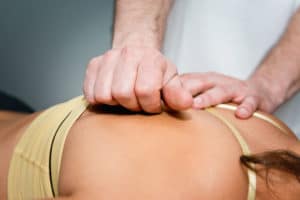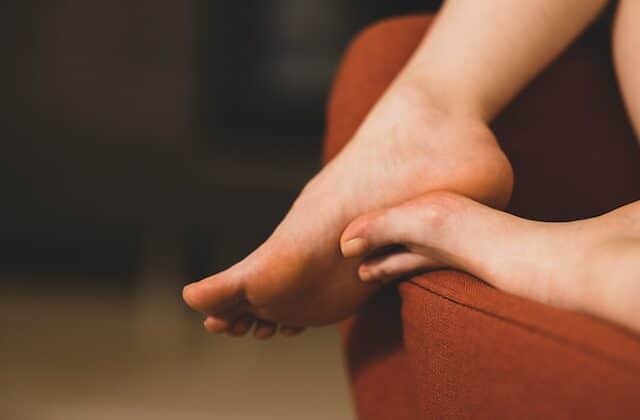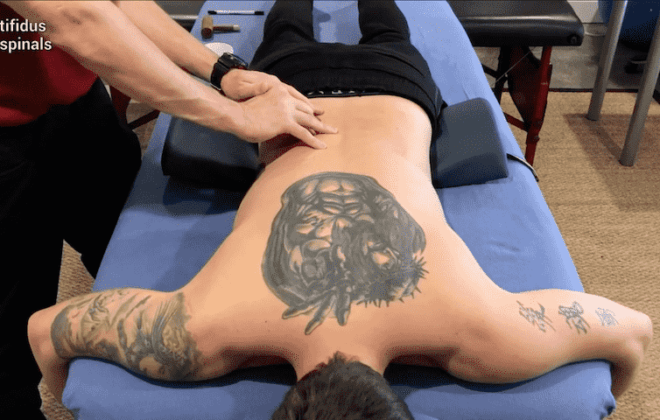Key Reasons To Get Massage Therapy After Car Accident
 Trauma is a common cause of back pain, and it can be very severe. The first idea that comes to mind to relieve back pain is a relaxing massage. But is it a good idea to massage an injury? Can you benefit from massage therapy after car accident or a similar type of trauma?
Trauma is a common cause of back pain, and it can be very severe. The first idea that comes to mind to relieve back pain is a relaxing massage. But is it a good idea to massage an injury? Can you benefit from massage therapy after car accident or a similar type of trauma?
In this article, we’re reviewing the topic and considering the evidence for reasons to get massage therapy after car accident to give you an answer based on what the science says.
How does massage promote healing?
When the body talks, it is sometimes wise to listen carefully. The urge for a massage after trauma responds to specific physiologic responses after rubbing your skin. Reviewing these effects in the context of back massage, Donna Gauthier, MSN, explained that massage has these benefits (1):
- It promotes relaxation, rest, and sleep quality, all fundamental for healing
- Massage therapy balances blood pressure levels and other hemodynamic issues
- Skin temperature increases as a sign of blood circulation improvements. This is essential to provide nutrients and oxygen to the healing tissues.
A more recent study published in the British Journal of Sports Medicine evaluated the role of massage after sports-related injuries (2). The researchers mention that muscles perceive massage and respond by sending chemical signals. They work together to reduce muscle tension, spasms, and swelling. Joint flexibility increases, and the healing process accelerates through modulation of inflammation, stem cell activity, and a substance called Vascular Endothelial Growth Factor (VEGF).
The basic principle is similar in a massage after car accident. However, we should be careful. Not every massage is appropriate after enduring severe trauma.
Is it okay to massage an injury?
Massage accelerates healing, but is it okay to massage an injury? Can you ask your relatives for a massage after car accident? In short, only a professional should massage an injury. Otherwise, you could cause more harm than good.
A massage therapist would evaluate your injury and give you a massage accordingly. There are many types and different degrees of depth, and you need one of them to recover. Thus, if you want to get a massage after car accident, finding a licensed massage therapist for the task is a better option.
Should I get a massage after a car accident?
Only a licensed therapist should give you a massage after car accident trauma (Once it is approved by a licensed physician!). If you receive this type of therapy, it will have several benefits (2, 3):
- It is an effective and drug-free healing tool
- It reduces pain and promotes better sleep
- Massaging the trouble area promotes blood circulation and nutrient exchange
- When properly done, it also wipes away swelling and liquid accumulation
- Massage therapy modulates inflammation and prevents muscle spasms
- It activates VEGF activity and stem cells, as described above
Should you get a massage if you have whiplash?
It can be a great idea to get massage therapy after car accident trauma. But what about whiplash? This is not a concussion and does not behave like a back muscle issue. It is a neck injury caused by jerking movements of your head during a car crash. This causes a sudden force that tears tendons and muscles in the neck, causing severe limitation and pain.
Massage therapy is an excellent way to get significant improvements in neck pain (4). Moreover, whiplash massage was found beneficial in patients with grade II injuries. It works even better when combined with active physical therapy (5). They won’t increase the range of movement right away, but they are effective measures to reduce pain.
Massage therapy after car accident: The technique matters
Whether it is a whiplash massage or a traditional back pain massage, the technique is always an important aspect. Depending on the type of lesion and its extension, your therapist may favor certain parts and avoid massaging others. A variety of massage techniques can be applied depending on what you need:
- Deep muscle therapy massage: Mainly used in chronic pain. The injury should be in an advanced stage of healing before trying a deep massage.
- Swedish massage: This gentle technique promotes blood flow and reduces anxiety levels. It is an excellent starting point to detect tenderness and proceed with other methods.
- Neuromuscular therapy massage: Your therapist may recommend this type if you suffered from whiplash. It involves specific techniques for your neck and head and is often used to reduce headache and neck pain.
Massage therapy after car accident injuries decreases pain and improves your recovery when done right. Thus, do not ask anyone to give you a massage after car accident trauma. Look for a professional instead, and always get the approval from your doctor before pursuing it!
There are some great reasons to get massage therapy after car accident, however, being informed and ruling out any potential underlying medical issues is first and foremost.
References
- Gauthier, D. M. (1999). The healing potential of back massage. Worldviews on Evidence‐based Nursing presents the archives of Online Journal of Knowledge Synthesis for Nursing, 6(1), 75-80.
- Best, T. M., Gharaibeh, B., & Huard, J. (2013). Stem cells, angiogenesis, and muscle healing: a potential role in massage therapies?. British journal of sports medicine, 47(9), 556-560.
- Airosa, F., Arman, M., Sundberg, T., Öhlén, G., & Falkenberg, T. (2016). Caring touch as a bodily anchor for patients after sustaining a motor vehicle accident with minor or no physical injuries-a mixed methods study. BMC complementary and alternative medicine, 16(1), 1-10.
- Sherman, K. J., Cherkin, D. C., Hawkes, R. J., Miglioretti, D. L., & Deyo, R. A. (2009). Randomized trial of therapeutic massage for chronic neck pain. The Clinical journal of pain, 25(3), 233.
- Dehner, C., Elbel, M., Strobel, P., Scheich, M., Schneider, F., Krischak, G., & Kramer, M. (2009). Grade II whiplash injuries to the neck: what is the benefit for patients treated by different physical therapy modalities?. Patient safety in surgery, 3(1), 1-8.
Tags In
Sam Visnic
Most Popular Posts
Categories
- Deep Gluteal Pain Syndrome (8)
- Deltoids (2)
- Foam Rolling (2)
- Glutes (9)
- Hamstrings (5)
- Hypnosis for Pain (3)
- Lats (2)
- Levator Scapulae (4)
- Lifestyle (8)
- Massage Therapy (39)
- Mobility (21)
- Movement and Exercise (19)
- Muscles (22)
- Nutrition (2)
- Obliques (1)
- Pain (25)
- Pectorals (3)
- Piriformis (3)
- Plantar Fasciitis (11)
- Psoas (11)
- Quadratus Lumborum (3)
- Quadriceps (2)
- Rhomboids (3)
- Sciatica (1)
- Serratus Anterior (1)
- SI Joint (14)
- Sternocleidomastoid (1)
- Stretching (18)
- Subscapularis (1)
- TMJ (2)
- Trapezius (1)
- Uncategorized (12)









